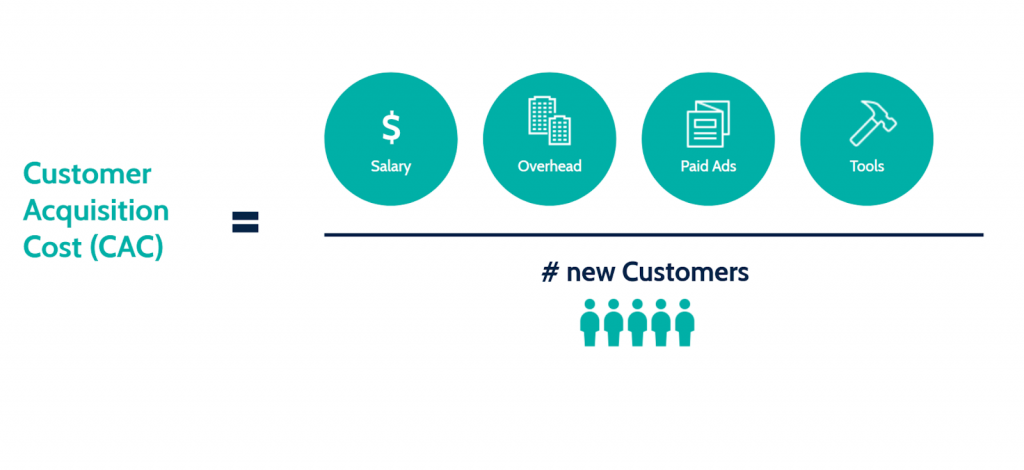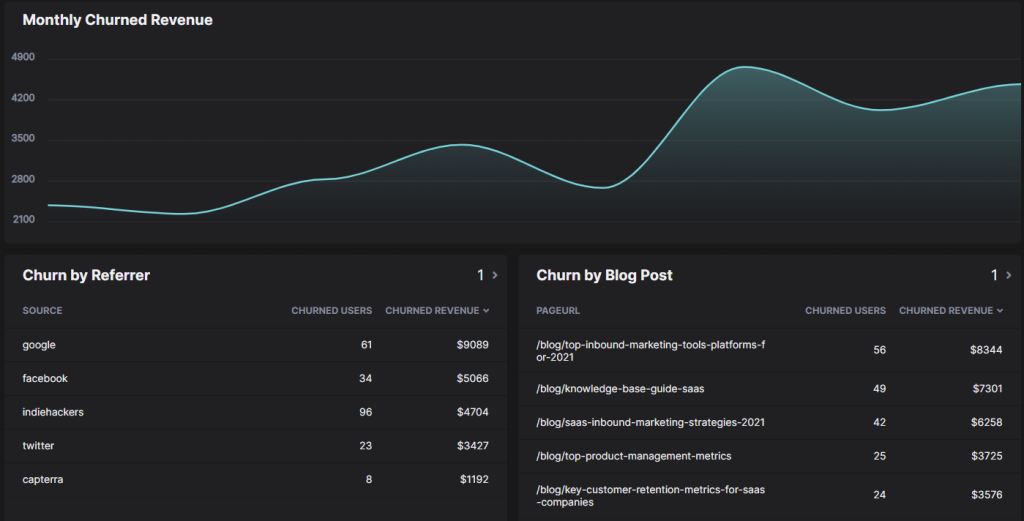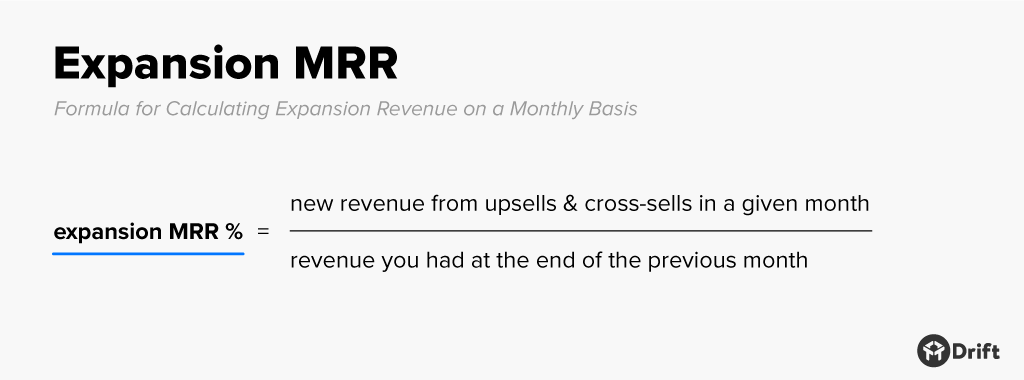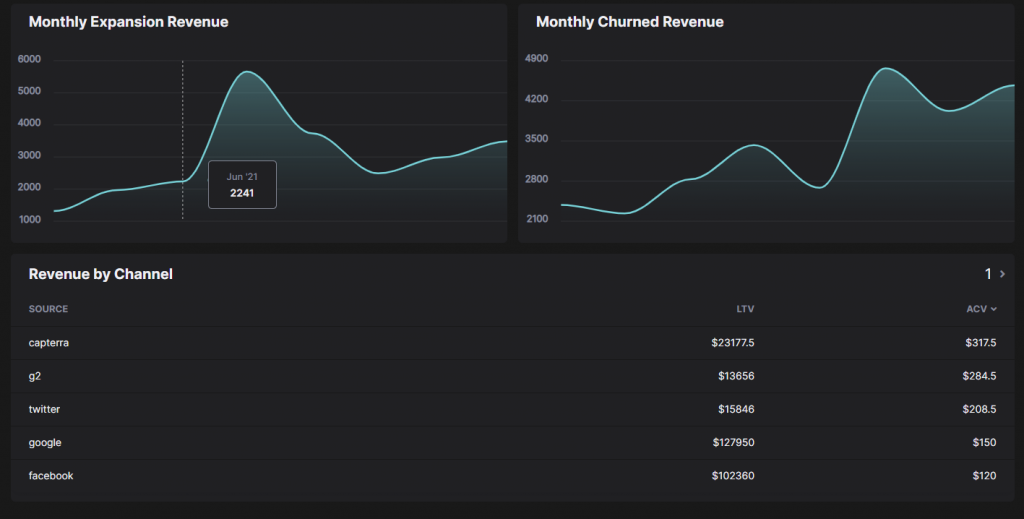Top SaaS Financial Metrics To Track TODAY
Finance is the common data of all SaaS companies. It allows you to bring out all the information needed for measuring the performance, growth, and potential of your service as cash flows. SaaS finance is a complex area since it includes planning your company’s financial modeling and reporting on the recurring revenue. SaaS Finance is especially important for you to compete in the market.
There are certain metrics that can give you clear insights into your SaaS finance, margin, and of course, the health of your business. However, choosing the right metrics is also an important part of detecting all these. Using accurate calculations with the right metrics will not only help you understand the financial health of your SaaS company but also give you crucial insights on the ways to improve it.
Keep reading to learn more about these important SaaS Financial Metrics, how to calculate them, and their importance to get an understanding of successful financial modeling for your SaaS company.
What is a good SaaS margin?
A good SaaS Margin is considered anything above 75%. While the average gross margin for SaaS ranges between 70% to 80%, below 70% is considered alarming in SaaS businesses. Gross margin is impactful in the valuation of your SaaS company. Your SaaS margin is one of the indicators of the health of your business.
To calculate your gross margin, you can use this formula:
Gross Margin = (Revenue – COGS) / Revenue
So, your gross margin is what exceeds the total cost of goods sold (COGS).
CAC
Customer Acquisition Cost or CAC refers to the amount you spend to get a new customer, including the amount on marketing and sales. CAC is at the center of your marketing & growth strategy because it gives you hints on how well your company is doing and what steps you should take to better your business.
CAC does not matter to businesses at the high-growth stage as much as it matters to newer ones. On average, it shows that CAC causes 92% of first-year revenue to be spent on itself and it takes 11 months to pay back.
Essentially, the lower your CAC is, the higher your profit is likely to be if your revenue from the customers is also high at the same time.
How to calculate CAC?
You can calculate your customer acquisition costs by using this formula:
Total Costs of Sales and Marketing / # of Customers Acquired = CAC
This formula provides the result of your customer acquisition cost for the time period you desire to know. However, calculating on monthly basis is recommended to be able to get more precise results rather than over or under calculating due to total costs of sales and marketing.
Why CAC is important?
Knowing your customer acquisition cost is important for your SaaS company as it runs on Customer Lifetime Value (LTV). So that:
- Acquiring new customers is costly, and also it may take more time than you think to start profiting because of CAC.
- Detecting how long it takes to recover from CAC is crucial so that you can balance your revenue accordingly.
- Besides, CAC can help you understand your numbers, such as margins, profit, and revenue, which are vital to be aware of to watch your company’s direction.

ROAS
Return on Ad Spend or ROAS for short is a marketing KPI that gives you an insight into your revenue from the investment you make on digital advertising, in other words, whether you benefit from it or not. Especially in B2B marketing, digital advertising plays an important role, so knowing your ROAS is knowing the efficiency of your efforts on an important marketing strategy.
How to calculate ROAS?
Calculating your ROAS is quite easy. The specific formula is:
(Total Income from Ad / Total Spend on Ad) x100 = ROAS
Note that, the ROAS number that is higher than your goal might look great, but it doesn’t mean it is a good thing. A higher ROAS number than your goal will probably mean the likelihood of losing potential growth.
At the same time, a lower ROAS than your goal means you lost potential growth.
Why ROAS is important?
- Calculating your ROAS is important to know if your efforts on media investments pay on profits or cause loss, and which type of ads bring you the most profit, so that knowing ROAS will prevent you from investing in ads that are not working with your company.
- While it helps you detect non-effective ad investments, it is beneficial to know which ones are working with your business, in this way you can effectively invest in the ones that work with you to get profit from your ads.
- It helps you to stay up to date with trends and benefits your marketing strategy which is a very important context against your competitors.
MRR
Recurring revenue is your company’s stable revenue on the basis of the contraction with your customers. Your Monthly Recurring Revenue or MRR measures the predicted revenues your company expects. Different than its sibling ARR, which shows you the yearly progress and is useful in long-term planning, MRR exposes month-by-month progression, which is a much better way to notice immediate effects.
How to calculate?
Calculating MRR is a good idea to understand how healthy your company’s progression is and to create an effective road map.
To calculate MRR:
Monthly Average Revenue per User x # of Monthly Users = MRR
Why is MRR important?
- Knowing your monthly recurring revenue helps you to predict the cash inflow and success of your service.
- It assists you to make strong forecasting, investments to grow your company.
- Also, the recurring revenue forms the basis of your pricing strategy.

LTV
LTV, also known as CLV (customer lifetime value), measures how valuable your customer is to your company. The value of the customer has direct effects on your profitability. If the customer stays in your service longer, it will have positive returns on your revenue because they will spend more money on your product. Also, it is important to point out that acquiring new customers is five times more expensive than keeping your current ones.
How to calculate LTV?
You can calculate your individual Customer Lifetime Value with this specific formula:
(Customer Revenue per year * Duration of subscription in years) – Total cost of acquiring and serving the customer = LTV
Why is it important?
As I’ve just let you know, acquiring new customers is more expensive due to acquisition costs. By optimizing your LTV, you get not only a steady cash flow but also you don’t need to pay for customer acquisition costs repeatedly. LTV is also an important metric for marketing analytics, that combines important customer statistics for you to know your customer engagement success. Plus, LTV is a great indication of your customer loyalty.

ARPU
ARPU or Average Revenue per User is an important metric that shows you how much you make from a customer, in this way investors are able to check out your business growth by analyzing the potential growth through each of your customers. It allows you to see the health of your company and what kind of a path you should follow in terms of your business values and pricing.
How to calculate ARPU?
In general, SaaS companies take a monthly basis to calculate ARPU because subscriptions renew itself month-by-month.
To calculate:
Total Revenue in Period / # of Customers in that Period = ARPU
Note that:
- Your total revenue is your MRR in this case.
- Don’t include free items and inactive customers
Why ARPU is important?
ARPU is an important metric in the sense that it affects both MRR and LTV: In the short term, higher ARPU means higher MRR and in the long term, it suggests a higher LTV. A low ARPU means you need more customers.
Also, if you get constant new customers while revenue is rising but your ARPU doesn’t change, you can read it as you have an underpriced service.
On the other hand, a lower ARPU than CAC indicates a loss per customer.
It is quite an effective way to understand the impact of a new business strategy you apply as your pricing. In this way, you can group new customers based on their behavior and optimize your pricing more effectively.
Churn Rate
Churn is inevitable for companies running on subscriptions. There will always be some customers who will not be satisfied with your service. Churn Rate tells you about the number of customers who cancel their subscriptions and leave your service in a certain period of time. The average churn rate for SaaS is around 5% while a “good” churn rate is 3% or less. Tracking your churn rate helps you to understand why your customer leaves and brings you to the next step: improving.
How to Calculate Customer Churn Rate?
To calculate your Churn Rate in a most simple way:
- Determine the time period you want to learn the rate such as monthly or annually
- Know the customer number at the beginning of that specific time period and the customer number lost during the period
- Divide the number of customers lost by the number of customers at the beginning, then multiply by 100.
Customer Churn Rate = (# of churned customers lost during the period / # of customers at the start of the period) x100
Why is it important?
It is important to know your churn rate because:
- It can point out a flaw and a problem with your service and alarm a reducing revenue.
- Knowing your churn rate is the first step to improve your service by solving the issues thereafter.

Expansion Revenue
Expansion Revenue is generated by the excess from your customers’ contract. It is basically the new revenue you make from your current customers rather than new ones. It also brings much more profit than acquiring new customers since you don’t have to spend money, in other words, customer acquisition cost (CAC) as I mentioned above.
There are three drivers of expansion revenue:
- Upsells are the additional products your customers upgrade to. It could be an additional plan or service.
- Cross-sells are the purchases of your other products by your customers as other products that go together with their current products.
- Add-ons are the additional product features that add to their current plans.
You need existing customers in your service for expansion revenue to be profitable. Customer retention is the main focus in this case because customer churn decreases your profits from expansion revenue by losing recurring revenue.
How to calculate Expansion Revenue?
While calculating Expansion Revenue, new customers are not included in the calculation.
So that, you take sum total of your MRR that is from upsells and cross-sells.
Your Expansion MRR is:

Why Expansion Revenue is important?
The higher the percentage of your expansion revenue, it shows, the more efficient your company is. Fast-growing companies get at least 20% of their sales revenue from their expansion while high growth companies receive 40%. In this case, serving your existing customers is playing a key role, so that you can receive upsells, cross-sells, and add-ons.
Expansion Revenue is important because it is the chance of regaining your revenue caused by churn, which is inevitable. The metric is one of the indicators of your business’ growth and how you should manage your growth strategy.

Revenue Growth Rate
Revenue Growth Rate shows you the increase of your revenue in a specific timeframe. It gives you an idea of how fast / or slow your business is growing. So that, it also gives investors an idea of your company.
Not only startups but also grown companies who change their plans and marketing strategies can benefit from this metric to be able to get a more solid idea of the effect of their change.
How to calculate Revenue Growth Rate?
The simple formula to calculate revenue growth rate:
(Second Month Revenue – First Month Revenue) / First Month Revenue x100 = Revenue Growth Rate
Why Revenue Growth Rate is important?
Your Revenue Growth Rate is important for your startup business because revenue growth is the best indicator of your company’s growth and investors fund based on your potential for growth. Also, you can determine and adjust your plans whether on a weekly or monthly basis according to your revenue growth rate. By calculating your growth rate, you can build a forecast of your business improvement. Strong forecasting is also important for investors, in which knowing your growth rate plays a key role.
Conclusion
SaaS Financial Metrics are vital for the growth of your SaaS company because being kept informed about the past, present and potential future of your service’s financial health is a key point to improve. By being aware of your gross margin, growth rate, churn, recurring revenue, LTV, and CAC, you can get a good understanding of the performance of your business.



